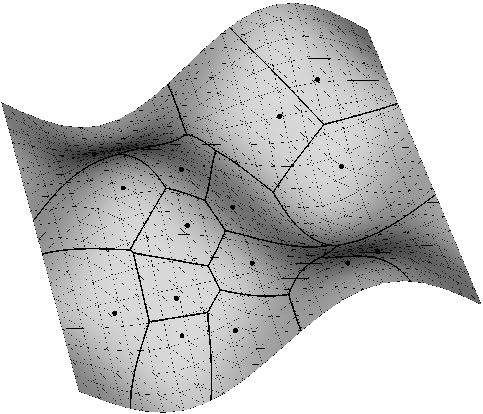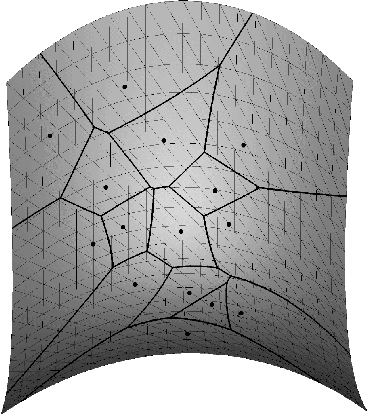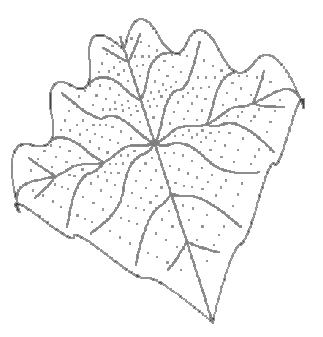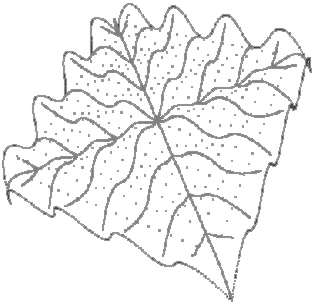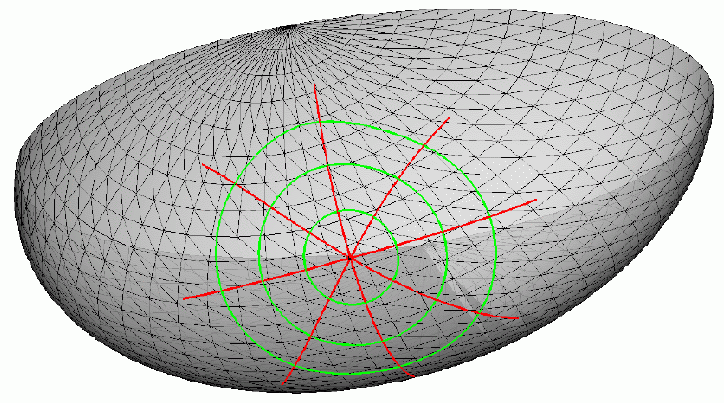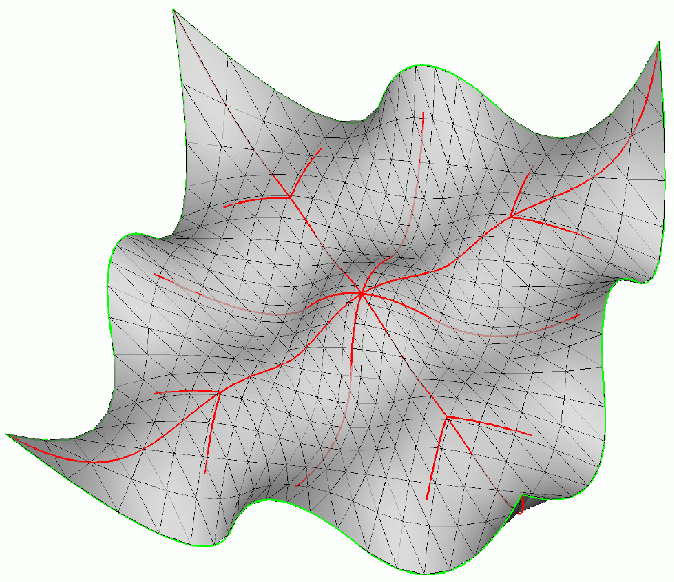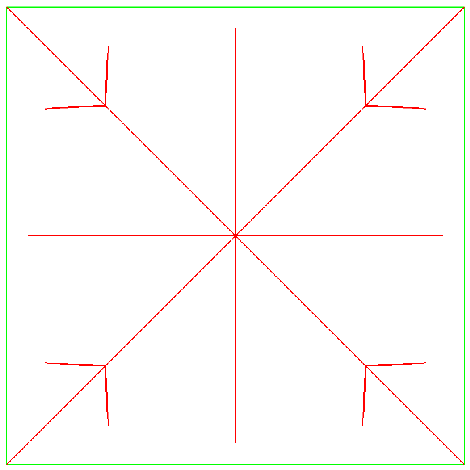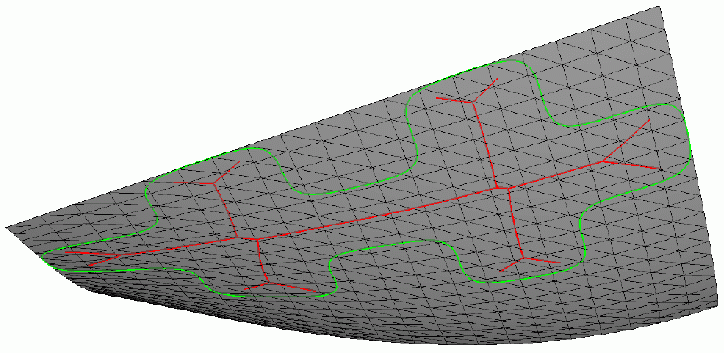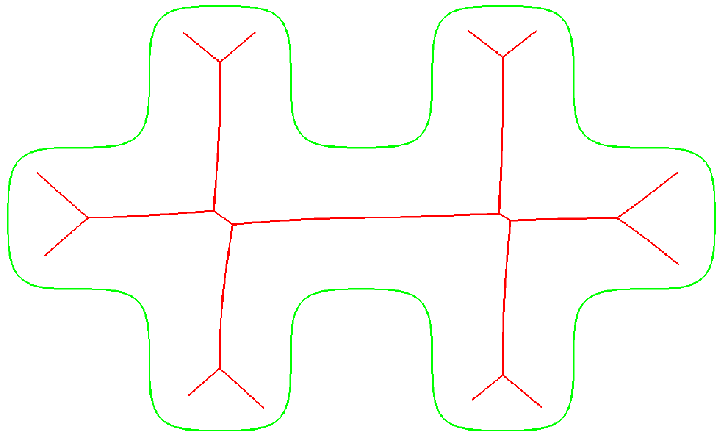|
|
| Shows the Geodesic Voronoi Diagram with respect to the finite point set P (given by the black dots) on the wave-like shaped surface S. This geodesic Voronoi diagram is given by the black edges. Each of those edges consists of points that are (geodesically) equidistant with respect to two (specific) points of the discrete set S. Here the geodesic distance between two given surface points is defined by the minimal length of all surface curves joining the two given points. As in the Euclidean case the geodesic Voronoi diagram partitions the surface into separate open domains. Each of those open domains contains exactly one point p of P. Together with p, the respective open domain contains all surface points whose geodesic distance to p is smaller than to any other point in the set P. | With the same conventions as in the previous wave like surface (figure on the left) we display now the geodesic Voronoi diagram of a finite point set located on a hyperbolic paraboloid surface |
